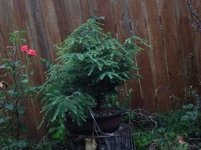MrFancyPlants
Omono
I have about half a bag of “hard” akadama that I can break apart with my fingers, but it is a nice and large size. Do you think I should include some in my mix of pumice, calidama (cannot crush w fingers), scoria... optional organics are spaghnum and compost depending on species. I hate the idea of wasting it since it is the most expensive component I have.



